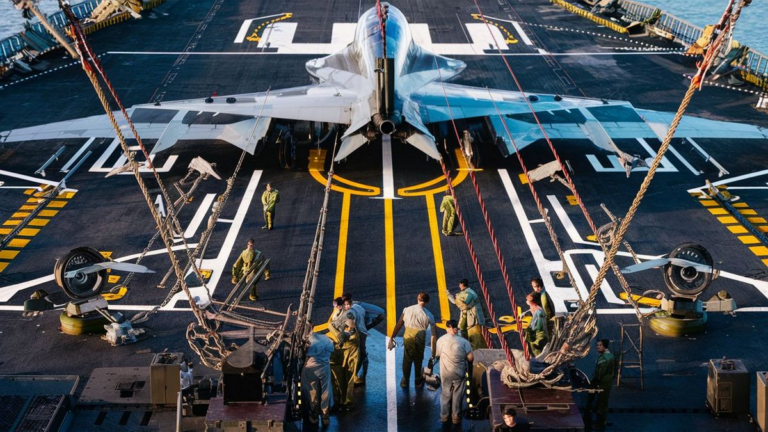Understanding the intricacies of how planes land on aircraft carriers is crucial to appreciating the precision and skill involved in naval aviation. This process is a carefully choreographed sequence that demands split-second decision-making and execution from pilots and deck crews alike.
Approach and Landing
When a plane prepares to land on an aircraft carrier, it first enters a controlled descent towards the carrier deck. Pilots must navigate their aircraft onto the glide path, a designated trajectory that guides them towards the landing area.
As the plane nears the carrier, it must align itself with the landing area, ensuring that it approaches at the correct angle and speed. Pilots rely on visual cues and instruments to maintain proper alignment and altitude throughout the approach.
Arresting Gear System
Once the plane touches down on the carrier deck, it relies on an arresting gear system to rapidly decelerate. This system consists of cables stretched across the deck, which engage special hooks on the aircraft’s tailhook upon landing.
The arresting gear system absorbs the aircraft’s momentum, bringing it to a controlled stop in a short distance. This allows planes to land safely on the relatively small and confined space of an aircraft carrier deck.
Catapult Launch System
Conversely, when planes take off from aircraft carriers, they utilize a catapult launch system to achieve the necessary speed for flight. This system rapidly accelerates the aircraft along the deck using steam or electromagnetic power, enabling it to become airborne in a very short distance.
The catapult launch system provides the necessary thrust for heavier aircraft or when additional speed is required for takeoff, ensuring safe and efficient operations from the carrier deck.
Deck Crew Operations
Behind the scenes, deck crews play a critical role in facilitating aircraft landings on carriers. These highly trained personnel operate the various systems, including the arresting gear and catapults, to support flight operations.
Deck crews must work quickly and efficiently to prepare the deck for incoming and outgoing aircraft, ensuring that everything is in place for successful landings and takeoffs. Their coordination and teamwork are essential for maintaining the tempo of operations on the carrier deck.
Training and Safety
Ensuring the safety of pilots and deck crews is paramount in naval aviation. Extensive training programs are in place to prepare pilots for carrier operations, including simulated landings on shore-based training facilities.
Additionally, strict safety protocols and procedures govern every aspect of aircraft carrier operations, minimizing the risk of accidents and mishaps during landings and takeoffs. Continuous training and proficiency evaluations help maintain the highest standards of safety and performance.
In conclusion, the process of landing planes on aircraft carriers is a highly orchestrated ballet of precision, skill, and teamwork. From the pilots navigating their aircraft onto the deck to the deck crews operating the essential systems, every aspect must come together seamlessly to ensure the safety and success of naval aviation operations.
Understanding how planes land on aircraft carriers provides a glimpse into the remarkable capabilities of naval aviation and the dedication of those who serve aboard these floating airfields.
Frequently Asked Questions
Below are some common questions regarding the landing of planes on aircraft carriers:
| Question | Answer |
|---|---|
| 1. How do pilots know when to engage the arresting gear? | Pilots rely on visual cues and communication with the landing signal officer (LSO) to determine the correct moment to engage the arresting gear upon landing. |
| 2. What happens if a plane misses the arresting gear? | If a plane misses the arresting gear, it performs a “bolter,” where it applies full power and executes a go-around for another landing attempt. |
| 3. How long does it take for a plane to be launched from an aircraft carrier? | The catapult launch system accelerates the plane to takeoff speed within a few seconds, allowing for rapid launches. |
| 4. What measures are in place to prevent accidents during landing? | Strict safety protocols, extensive training, and continuous proficiency evaluations help minimize the risk of accidents during landing operations. |
Technology Advancements
Advancements in technology have significantly improved the efficiency and safety of aircraft carrier operations. Modern carriers are equipped with advanced catapult launch systems and arresting gear, utilizing innovations such as electromagnetic aircraft launch systems (EMALS) and advanced arresting gear (AAG) for smoother and more reliable operations.
Additionally, developments in aircraft design have led to the creation of carrier-capable aircraft optimized for short takeoff and vertical landing (STOVL), expanding the range of aircraft that can operate from carriers.
See also:






